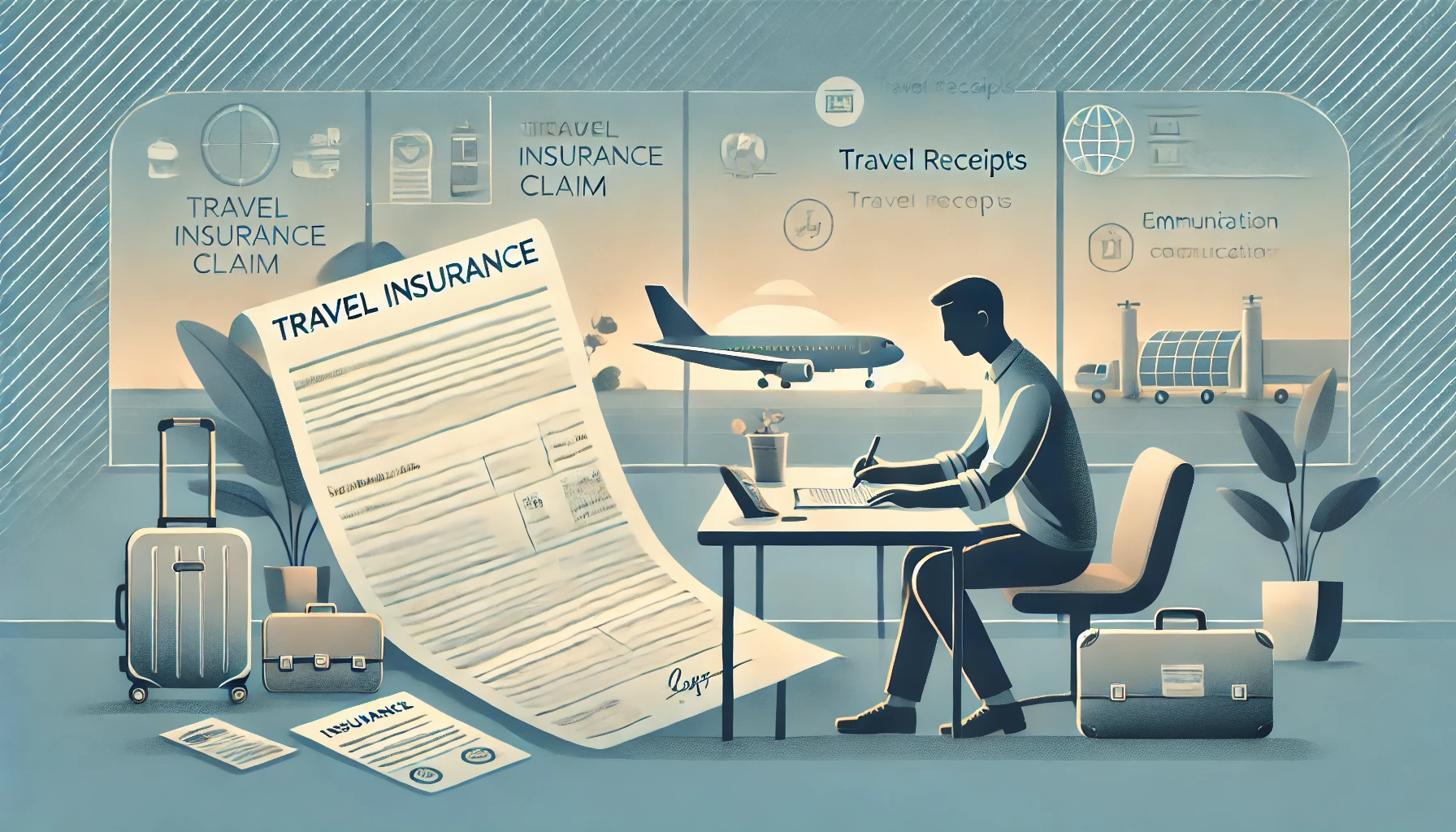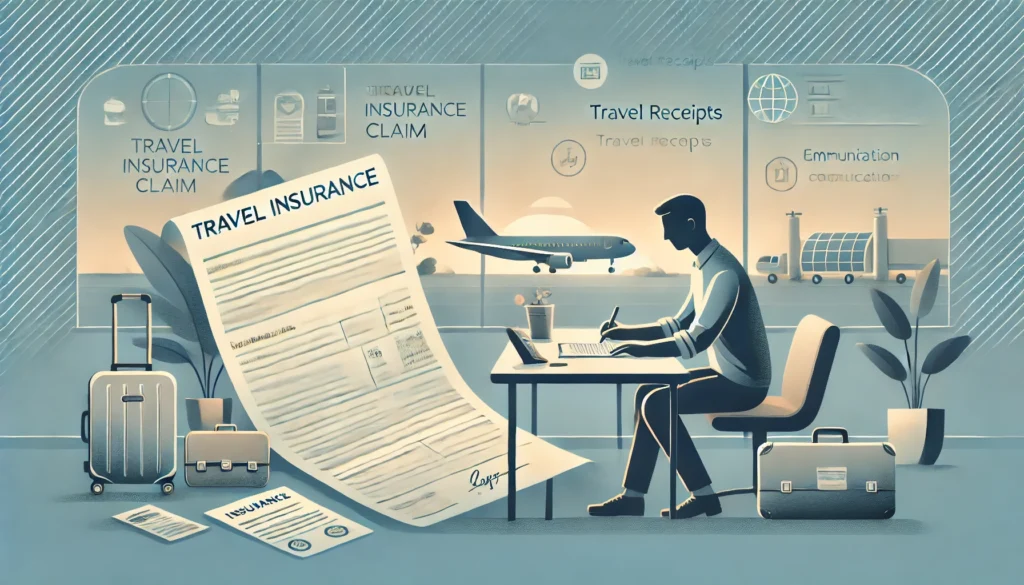Introduction
Traveling offers an array of experiences that enrich our lives, from exploring diverse cultures to tasting new cuisines. However, with the thrill of adventure comes the potential for unexpected challenges. Medical emergencies, trip cancellations, lost luggage, and other unforeseen events can turn a dream vacation into a stressful ordeal. This is where travel insurance becomes essential.
Travel insurance acts as a safety net, providing financial protection and peace of mind while you navigate the uncertainties of travel. With numerous plans available, choosing the right travel insurance can seem overwhelming. This comprehensive guide will take you through everything you need to know about selecting the best travel insurance plan to meet your needs.
#1. What type of job are you looking for?
#2. What is your work experience level?
#3. What is your English level?
#4. Where are you willing to work?
#5. When can you start?
1. Understanding the Types of Travel Insurance
Before diving into the selection process, it’s crucial to understand the various types of travel insurance available. Each type caters to specific needs and circumstances, and knowing the differences can help you make an informed choice.
1.1. Comprehensive Travel Insurance
Comprehensive travel insurance plans offer a broad range of coverage options, making them a popular choice for travelers. Typically, these plans include coverage for:
- Trip cancellations: Reimbursement for non-refundable expenses if you need to cancel your trip.
- Medical emergencies: Coverage for medical expenses incurred due to illness or injury while traveling.
- Baggage loss: Compensation for lost, stolen, or damaged luggage and personal belongings.
- Travel delays: Coverage for additional expenses due to flight delays, such as accommodation and meals.
This type of insurance is ideal for those looking for extensive protection across various aspects of their trip.
1.2. Medical Travel Insurance
Medical travel insurance focuses specifically on healthcare needs while traveling. This type of insurance is particularly important for international travelers, as healthcare costs can be exorbitant in certain countries. Key features typically include:
- Emergency medical coverage: Expenses for hospital stays, surgeries, and doctor visits due to sudden illness or injury.
- Medical evacuation: Coverage for transportation to the nearest appropriate medical facility, which can be crucial in remote locations.
- Repatriation: Costs associated with returning a deceased traveler to their home country.
If your primary concern is medical emergencies, this type of insurance will provide tailored coverage.
1.3. Trip Cancellation Insurance
Trip cancellation insurance is designed to protect travelers from losing non-refundable expenses if they have to cancel their trip for covered reasons. Common reasons include:
- Illness or injury: If you or a family member falls ill before your trip.
- Natural disasters: If your destination is affected by a hurricane, flood, or other disasters.
- Job loss: If you lose your job unexpectedly.
This insurance is ideal for travelers who invest a significant amount in their trips and want to mitigate the financial risks associated with cancellations.
1.4. Baggage Insurance
Baggage insurance provides coverage for lost, stolen, or damaged luggage and personal items during your travels. This can include:
- Lost luggage: Compensation if your checked baggage doesn’t arrive at your destination.
- Theft: Coverage for stolen personal belongings, such as laptops, cameras, and other valuables.
- Delayed baggage: Compensation for essential items you need to purchase if your luggage is delayed.
For travelers carrying valuable items or those who frequently travel with multiple bags, baggage insurance is an important consideration.
1.5. Travel Delay Insurance
Travel delay insurance helps compensate travelers for expenses incurred due to delayed flights or other transportation issues. Coverage typically includes:
- Accommodation costs: Reimbursement for hotel stays during delays.
- Meal expenses: Compensation for food costs incurred while waiting.
- Transportation costs: Coverage for transportation to and from the airport.
This type of insurance is valuable for travelers who may face layovers or connecting flights, especially during peak travel seasons when delays are more common.
2. Assessing Your Travel Needs
When selecting a travel insurance policy, your specific needs and circumstances will significantly influence your decision. Consider the following factors:
2.1. Type of Trip
Leisure vs. Business
Determine the purpose of your trip. Business trips often require different coverage compared to leisure trips. For example, business travelers may need coverage for lost business equipment or missed meetings. Ensure your policy covers these specific needs.
Destination
Your destination plays a critical role in determining your insurance needs. Consider factors like:
- Healthcare costs: Countries with high healthcare expenses may necessitate more comprehensive medical coverage. For example, a medical emergency in the U.S. can be financially devastating without adequate insurance.
- Political stability: If you’re traveling to a region with political unrest or natural disaster risks, ensure your policy includes coverage for cancellations and evacuations.
2.2. Length of Trip
The duration of your trip can also influence your insurance selection. Longer trips may increase the likelihood of unexpected events occurring, such as illness or travel disruptions.
- Extended coverage: If you’re traveling for several weeks or months, look for policies specifically designed for long-term travel.
- Annual plans: Frequent travelers may benefit from an annual travel insurance plan that covers multiple trips throughout the year.
2.3. Activities Involved
If your trip involves high-risk activities, such as skiing, scuba diving, or hiking, you must choose a policy that covers adventure sports. Many standard plans do not include coverage for these activities, leaving you vulnerable.
- Activity-specific coverage: Some insurers offer policies specifically tailored to adventure travelers, ensuring you are protected during high-risk activities.
3. Comparing Policies
Once you understand your needs, it’s time to compare different travel insurance policies. Here’s how to effectively evaluate your options:
3.1. Coverage Limits
Review the coverage limits of each policy. Pay attention to the maximum amount the insurer will pay for specific expenses, such as medical treatment, trip cancellations, and baggage loss.
Example: A policy might offer up to $100,000 for medical expenses but only $500 for baggage loss. Ensure the limits align with potential costs you may encounter during your travels.
3.2. Exclusions
Every insurance policy has exclusions—situations or conditions that are not covered. Read the fine print carefully to understand what is excluded.
Common Exclusions: These may include pre-existing medical conditions, specific high-risk activities, and incidents related to alcohol or drug use.
- Pre-existing conditions: If you have a medical condition that exists prior to purchasing insurance, check if it is covered. Some policies offer a “look-back” period during which certain conditions may be excluded.
- High-risk activities: Ensure the policy covers any activities you plan to participate in. For example, if you plan to go skydiving, make sure your policy explicitly includes that activity.
3.3. Deductibles
Some policies require you to pay a deductible before the insurance kicks in. Higher deductibles often lower the premium, but they may also increase your out-of-pocket costs in case of a claim.
Example: A policy with a $500 deductible means you will pay the first $500 of any claim before the insurance company covers the rest. Consider your comfort level with potential out-of-pocket expenses when selecting a deductible.
4. Researching Providers
Choosing a reputable insurance provider is just as crucial as selecting the right policy. Here’s how to evaluate potential insurers:
4.1. Financial Stability
Research the financial stability of the insurance company. Look for ratings from independent agencies like A.M. Best, Standard & Poor’s, or Moody’s, which assess insurers’ financial health and ability to pay claims.
- High ratings: A financially stable insurer is more likely to fulfill claims promptly and efficiently.
4.2. Customer Reviews
Read customer reviews and testimonials to gauge the experiences of other travelers. Look for feedback on claims processes, customer service, and overall satisfaction.
Example: A company with consistently positive reviews for their claims process indicates reliability and good customer support. Conversely, many negative reviews may signal potential issues with the provider.
4.3. Claims Process
Understand how the claims process works for each provider. A straightforward and efficient claims process can save you time and stress in an emergency.
- Ease of filing claims: Check if the provider allows online claims submission and track claims status through their website or mobile app.
- Support availability: Look for providers that offer 24/7 customer support, as emergencies can occur at any time.
5. Know What You’re Buying
Once you’ve selected a policy, ensure you fully understand what you are purchasing.
5.1. Read the Policy Document
Carefully read the policy document to grasp the terms and conditions. Pay attention to key areas like:
- Coverage limits: Understand how much you are covered for specific incidents.
- Exclusions: Be aware of what is not covered to avoid surprises when filing a claim.
- Claims process: Familiarize yourself with the steps required to file a claim, including documentation needed.
5.2. Ask Questions
Don’t hesitate to ask questions. Contact the insurance provider or agent if there are any aspects you don’t understand. Clarifying doubts upfront will help avoid issues later.
- Contacting customer service: Use available channels such as phone, email, or live chat to get your questions answered before purchasing.
5.3. Keep Documents Handy
Once you purchase your policy, keep a copy of the documents handy. Store them digitally on your phone or have a printed version in your travel wallet. This will make it easier to access the information when needed.
- Emergency contacts: Keep the insurance provider’s contact information easily accessible in case you need to reach them while traveling.
6. Tips for Maximizing Your Travel Insurance
To ensure you get the most out of your travel insurance, consider these helpful tips:
6.1. Purchase Early
Buy your travel insurance as soon as you book your trip. Early purchase can provide coverage for unforeseen events that may occur before your departure, such as illness or natural disasters.
- Pre-existing condition coverage: Some policies offer a window for pre-existing conditions to be covered if purchased within a certain time frame after your initial trip deposit.
6.2. Disclose Pre-existing Conditions
If you have pre-existing medical conditions, disclose them when purchasing insurance. Failure to do so may result in denied claims related to those conditions.
- Get a doctor’s note: If possible, obtain a doctor’s note confirming your fitness to travel, especially if you have a history of health issues.
6.3. Review and Update Regularly
Review your travel insurance needs regularly, especially if your travel habits change. If you plan a different type of trip or travel to a new destination, adjust your coverage accordingly.
- Annual reviews: Consider reviewing your insurance policy annually to ensure it meets your current travel patterns and needs.
6.4. Use a Reputable Comparison Tool
Many websites allow you to compare travel insurance policies side-by-side. Use these tools to evaluate different options, premiums, and coverage comprehensively.
- Comprehensive comparison sites: Choose a comparison tool that includes various insurers and offers filters based on your specific needs.
7. The Claims Process: What to Expect
Understanding the claims process is essential for effectively utilizing your travel insurance. Here’s a breakdown of what to expect:
7.1. Documentation
When filing a claim, thorough documentation is crucial. This may include:
- Medical records: If you had a medical emergency, you’ll need detailed records from healthcare providers.
- Receipts: Keep all receipts for expenses related to your claim, such as medical bills, canceled flights, or accommodations.
- Police reports: For theft or loss claims, obtain a police report to support your case.
7.2. Filing a Claim
Most insurance providers have a straightforward claims process. Typically, you’ll need to:
- Contact Your Insurer: Notify them of your situation as soon as possible. Many providers have 24/7 hotlines for emergencies.
- Submit Documentation: Provide all required documentation and forms. This may often be done online for convenience.
- Follow Up: Stay in touch with your provider to check on the status of your claim and provide any additional information they may request.
7.3. Timeframes
Understand the expected timeframes for claim processing. Some insurers may process claims within a few days, while others may take longer, especially for complex cases.
- Keep records: Document all interactions with the insurer, including dates and names of representatives.
8. Conclusion
Choosing the right travel insurance plan is an essential part of preparing for any trip. It provides invaluable financial protection against a range of unexpected events, from medical emergencies to trip cancellations and lost luggage. By understanding the types of insurance available, assessing your specific needs, and comparing various policies, you can select a plan that best fits your travel style.
Take the time to research reputable providers and thoroughly review policy documents to ensure you know what you are purchasing. With the right travel insurance in place, you can embark on your adventures confidently, knowing you are protected against unforeseen challenges.
Investing in travel insurance is not just about safeguarding your finances; it’s about ensuring that you can fully enjoy your journey without the constant worry of what might go wrong. So whether you’re planning a weekend getaway or a multi-country expedition, make informed decisions, and travel with peace of mind knowing you’re covered.









